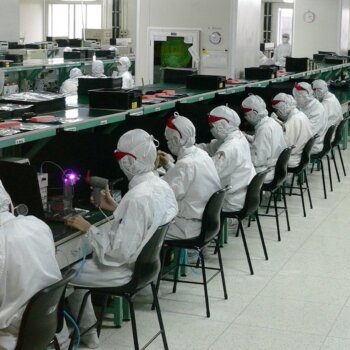Key Takeaway:
Businesses are facing rising borrowing costs and wage growth, affecting industries like advertising and retail. Redundancies can impact all employees, including those at risk, survivors, and management and HR teams. Decreased trust can lead to a toxic work environment, causing employees to question loyalty and commitment. Psychological stress can lead to increased absenteeism, causing employees to seek new work opportunities. Job insecurity can lead to the loss of talent, as employees may seek alternative roles. Employers can limit the unforeseen consequences of workforce stress during redundancies by communicating with compassion, providing tailored support, and realigning roles with the organization’s revised vision. Additionally, offering career and trauma counseling can help employees manage emotions and manage their emotions. Employers should also consider job design for remaining roles, realigning tasks with the organization’s revised vision.
Tech giants including X (then known as Twitter) and Facebook owner Meta announced thousands of job cuts globally in 2022 and 2023, as did other firms like entertainment company Disney, consultancy firm KPMG and phone company Vodafone.
This is likely to continue. Businesses are dealing with sharp rises in borrowing costs and continued wage growth, at the same as consumer spending is falling, affecting industries like advertisingand retail.
Of course, such news has a very direct impact on those that lose their jobs. But all employees are impacted by reductions in a workforce. The employees made redundant are undoubtedly the victims, but those at risk are semi-victims, even if they are redeployed into another role.
Even the survivors – employees that don’t get laid off – are affected by stress and increased workloads in some cases. And let’s not forget the “bringers of bad news”: the management and HR teams that have to execute the layoff process may also feel stress or guilt.
Each group experiences job cuts in a very different way, of course. But there are some consistencies in how all are affected – and in how to help.
1. Decreased trust leading to a toxic work environment
As soon as redundancies are announced, the “psychological contract” that outlines the relationship between employees and employer is damaged. Essentially, trust is breached as the worker’s expectations and beliefs about their employer are challenged. The idea that everyone is working towards a common goal can be shattered by a redundancy announcement.
When trust is broken in this way, employees might start making decisions about their loyalty and commitment. Experiencing an “unsafe” environment psychologically, or low levels of job insecurity, can encourage people to look for new work opportunities – sometimes before redundancies are even announced. Consequently, organisations might lose talented and skilled staff that they would have saved from redundancy.
2. Psychological stress leading to increased absenteeism
All employees can experience significant levels of stress during a layoff process. For those made redundant, this stress is exacerbated by financial concerns about how they will pay their bills. The feelings of helplessness and anxiety over a job loss could lead to ill mental and physical health.
Semi-survivors (those whose jobs were at risk but ultimately weren’t made redundant) and survivors often also experience stress due to an increased workload. They may have to pick up additional duties previously carried out by employees who have been made redundant. Leaders can also experience stress. They deal with disgruntled employees, but they also usually have to deliver the unpleasant news of job losses in the first place.
3. Job insecurity leading to loss of talent
Once people experience the kind of breach of trust that can come with mass lay-offs, it can lead to feelings of job insecurity and low morale. You might think to yourself: “I may as well get ahead of the game and find another job now.” Or: “Why would I stay with this organisation? Do my bosses even know what they are doing?”
So, whether other workers are due to lose their jobs or not, they may start to apply for alternative roles. And in most situations, it’s unsurprising that the most talented employees, and those that are highly skilled, can often easily find new employment. A voluntary exit of workers at the same time as or after a redundancy programme can cause significant damage to the business if skilled and talented employees that are imperative to operational success leave at a time of organisational vulnerability.
Social media platform X (then known as Twitter) found this to be the case after making redundancies in November 2022. Around 1,000 employees resigned voluntarily after redundancy announcements were made following the sale of the business to Elon Musk. The employer/employee power shifted and the company had to start rehiring or replacing valuable, highly skilled employees, having only just made redundancies.

Tackling the hidden consequences of redundancies
What can employers do to limit the unforeseen consequences of workforce stress during redundancies?
First of all, communicating redundancies with compassion can help keep employees on board. Communication should come from the top, with the leadership team owning the message. But it also needs to be a two-way process, allowing all employees to have their questions answered. My research with Claire Hannibal into so-called “redundancy envoys” (those who deliver the redundancy message) shows that the rationale for job cuts needs to be transparent, clearly communicated and fully understood by employees.
Second, each impacted group needs support that is tailored to their needs. Providing more generous compensation packages for victims of redundancy can help to alleviate immediate financial concerns. Employers can also help them network with companies that are hiring, or connect them with organisations providing training and skills for new roles, or that educate people about self-employment or retirement.
Employers should also offer career and trauma counselling support to all employees. This will help them understand and manage the range of emotions they may feel – from guilt, anger and resentment, to stress and sadness.
Finally, employers need to think carefully about job design for the remaining roles. Due to increased workloads and survivors often having to pick up new sills, every role must be realigned with the organisation’s revised vision. Employees should be supported to understand any new tasks they need to prioritise – and which tasks they no longer have to fulfil. Providing training and development will also help to rebuild employee’s confidence in the organisation.
Although making redundancies is very unpleasant for the whole workforce, there are ways for employers to undertake the process with compassion, treating all employees – whether they’re leaving or staying – with dignity.





























